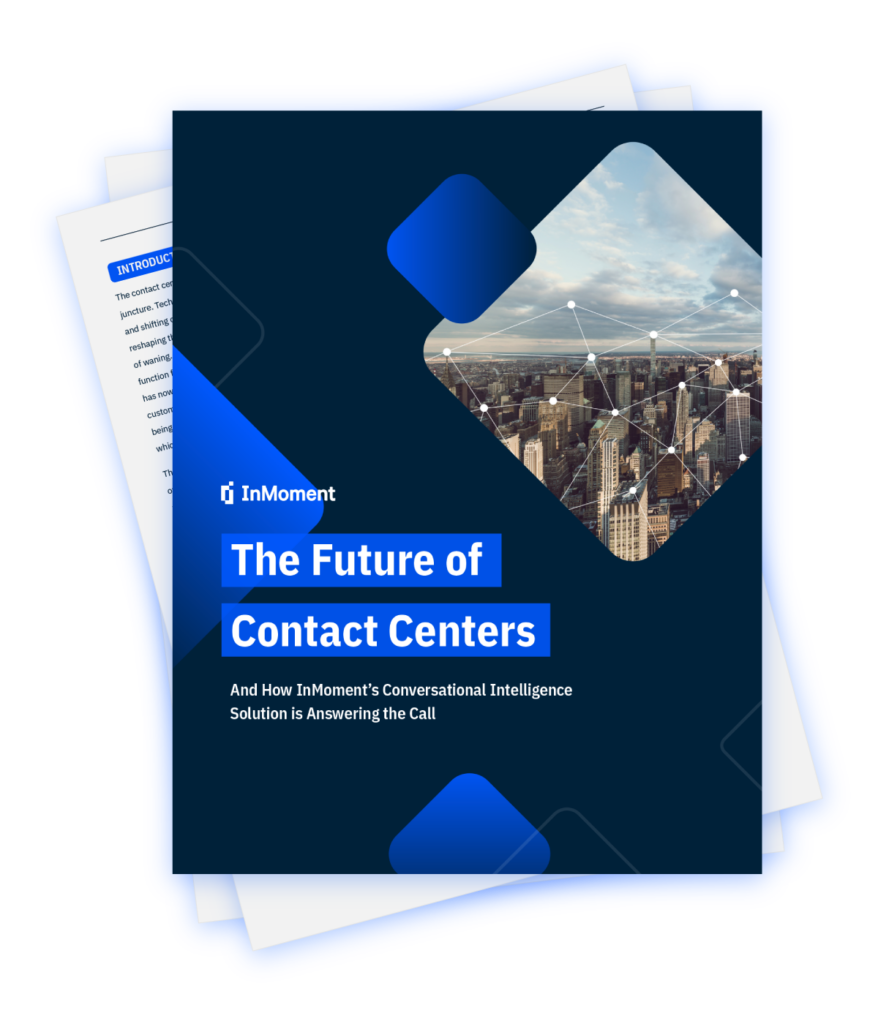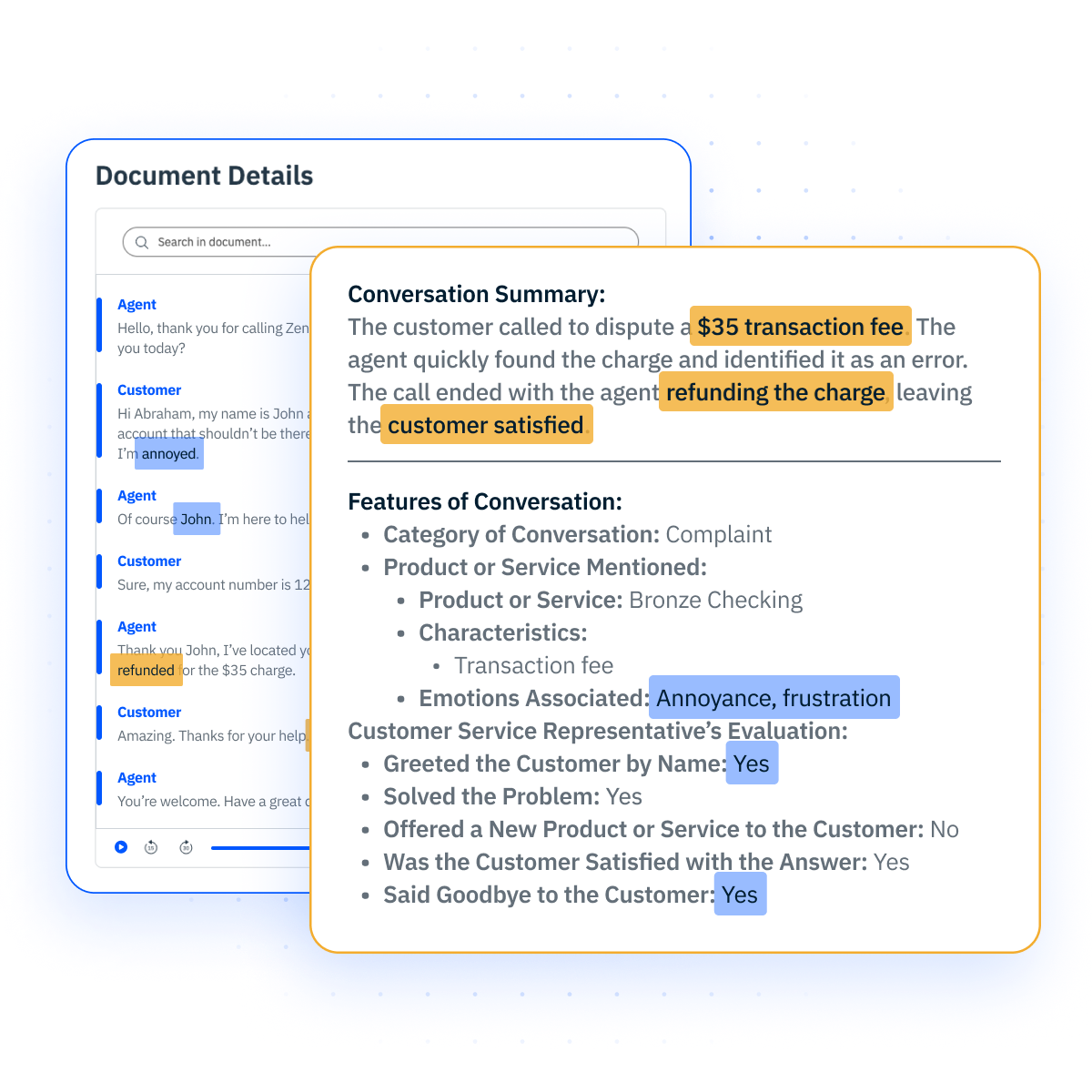How Conversational Intelligence (CI) Empowers Organizations to Forecast Sales Trends
Find out how Conversational Intelligence revolutionizes sales forecasting with real-time data, sentiment analysis, and emerging trend detection.
Sales forecasting is essential for anticipating demand, allocating resources, and setting realistic revenue goals. Forecast accuracy is crucial; otherwise, businesses risk overlooking growth opportunities and wasting resources.
However, according to Gartner research, forecasting is one of the top areas where sales operations functions are least effective. Traditional forecasting processes often miss the mark as they don’t account for the latest market changes or shifts in consumer preferences.
Therefore, businesses must look beyond historical sales data and integrate customer experience insights with their forecasting models for accurate results.
The Benefits of an Accurate Sales Forecast
Accurate sales forecasting empowers businesses to make informed decisions that drive customer satisfaction and sales. Here are some key benefits:
- It helps optimize resource allocation. Businesses are more likely to improve inventory management, staff performance, and budget allocation if they set realistic sales targets.
- It improves cash flow management. The ability to forecast revenue streams allows businesses to maintain financial stability.
- It strengthens sales strategies. Sales teams become flexible since they can adjust their outreach efforts based on market trends.
- It boosts investor confidence. Accurate sales forecasts signal strong financial health, which helps secure investor interest and funding.
- It provides a competitive advantage. When businesses can confidently predict sales, they are better equipped to capitalize on shifts in customer preferences and stay one step ahead of the competition.
What Factors Impact Sales Forecasting Accuracy?
Businesses must consider several internal and external factors to achieve accurate sales forecasts. Each factor affects the usefulness of sales predictions, from new releases and legislative changes to outdated tools and incomplete data.
Internal Factors
Internal misalignment is a significant roadblock for accurate sales forecasts. Poor communication, staff changes, and resource constraints contribute to unpredictable revenue growth.
- Poor communication impacts the quality of data businesses feed into their forecasting models. Misaligned marketing, sales, and finance teams cannot effectively share data, resulting in forecasts based on incomplete information.
- Staff changes in your sales and marketing teams impact sales volume and stability. For example, if your best-performing sales managers leave, their accounts will likely experience a temporary decline that conventional models don’t factor into their predictions.
- Resource constraints in technology and the workforce present a significant hurdle for accurate predictions. A lack of investment in predictive analytics tools and experts leads to guesswork rather than data-driven predictions. Therefore, your business will likely struggle to predict revenue growth without the right sales forecasting methods and personnel.
External Factors
Sales forecasts are vulnerable to unpredictable external influences that businesses cannot control. Competitor activity, market trends, and economic downturns all impact consumer demand.
- Market trends dictate consumer preferences, so predicting them is key to accurate sales forecasting. For example, failing to anticipate declining customer demand from a specific region can lead to overestimating future revenue growth.
- Competitor activity affects your market share and sales volume. For example, if your competitor adopts an aggressive pricing strategy, you’re likely to see your sales drop below the expected figure. Therefore, a good practice is to invest in competitor analysis software that leverages AI to keep you in the loop regarding key players in your space.
- Macroeconomic factors such as GDP growth, exchange rates, and retail sales present a significant forecasting challenge. While businesses can’t control economic conditions, they must stay informed to adjust their forecast methods accordingly.
Technological Limitations
Without omnichannel data collection and AI-driven insights, your business will struggle to collect and act on valuable competitor and customer data. You won’t be able to account for key sales growth factors, leading to missed opportunities and inefficient resource allocation. Therefore, AI-enabled sales forecasting software is essential for setting realistic targets.
How CI Transforms Sales Forecasting
Conversation Intelligence (CI) is a data-driven approach to collecting, interpreting, and analyzing interactions between customers and businesses. It captures textual and audio data from multiple channels to provide comprehensive insights into customer behavior. Here are five key ways this effective data collection and analysis helps generate realistic sales forecasts.
Comprehensive Data Analysis Across Channels
CI collects and connects customer experience data from every relevant source to build a comprehensive dataset for analysis. These sources include contact center calls, chat transcripts, surveys, and emails.
It’s crucial to invest in an omnichannel customer experience platform like Pearl-Plaza that doesn’t miss out on key insights. Unlike a multichannel platform, an omnichannel tool doesn’t use each channel independently. Instead, it seamlessly integrates data across these channels to provide a unified view of customer interactions.
For example, a user’s online review provides limited information on its own. However, connecting the review to the same user’s call transcript and survey responses uncovers a clearer picture of their unique experience.
Insights and Emerging Trend Detection
Once you have the data in place, you can dig into it to spot trends in customer behavior. CI leverages machine learning to extract these valuable insights. This AI-driven approach helps businesses proactively address pain points, with 70% of consumers believing there is a clear gap between companies that leverage AI to serve them and those that don’t. It also enables sales and marketing alignment by providing both departments with a unified view of market trends.
Sentiment and Behavioral Analysis
Monitoring customer behavior trends is helpful, but it’s also worth understanding the drivers behind these shifts. CI addresses this requirement by using Natural Language Processing (NLP) techniques, such as sentiment analysis, to decode customer emotions, effort, and intent.
With Pearl-Plaza’s core NLP engine, you achieve low-latency text extraction and analytics capable of processing over five social media posts per second. This comprehensive analysis helps you anticipate customer needs and adjust your sales forecasts accordingly.
Impact Prediction and Opportunity Prioritization
CI relies on past sales data to predict future buying patterns. It leverages machine learning algorithms to pinpoint the most impactful sales drivers, including customer sentiment, product demand, and competitor activity. With this insight, businesses can prioritize high-impact sales and marketing strategies.
Focused Insights on Individual Speakers
The best CI tools support comprehensive analysis across your organization. For instance, Pearl-Plaza’s conversation intelligence software lets you drill down into each actor’s input in a customer-agent interaction.
The agent-specific insights help call center managers to motivate top performers and identify agents who require additional training. Meanwhile, the customer insights highlight intent and sentiment in a conversation to gauge satisfaction levels.
Key Benefits of Using CI for Sales Forecasting
CI helps businesses identify trends and issues early, enabling proactive steps to improve sales performance. Here are six positive results of incorporating this technology for improving forecast accuracy.
Improved Ability to Identify Market Trends and Customer Behaviors
CI tools analyze vast amounts of customer interaction data across channels like social media and phone calls to detect emerging trends and behaviors. This analysis enables sales teams to anticipate shifts in market demand and respond accordingly. For example, if CI highlights a growing expectation for free trials during sales discovery calls, businesses can increase customer satisfaction by re-evaluating their pricing strategy.
Increased Sales Efficiency by Targeting the Right Opportunities
Another key benefit is efficient sales cycles for finding, qualifying, and converting high-quality leads. CI platforms help build automated workflows to save valuable hours that sales reps can invest in winning over qualified prospects.
Pearl-Plaza’s CI tool, for instance, features intelligent auto-tagging to categorize large volumes of feedback in real time. This automatic categorization routes and organizes interaction data, thus handling routine tasks and freeing up time for agents to build strong customer relationships.
Competitive Advantage in Adapting to Trends Faster
CI gives businesses a real-time pulse on emerging trends, providing a significant edge in a hypercompetitive market. This continuous analysis helps companies to identify changing preferences, new demands, and growing pain points.
For example, if your SaaS company detects increased mentions of AI-powered automation in customer queries and competitor mentions, you can move ahead of the pack. Integrating AI into your product roadmap and establishing your topical authority through marketing will help you address a growing need. As a result, you will boost customer retention and your market share.
Improved Products, Processes, and Marketing Through Customer Insights
Analytical insights into customer behavior are also useful for improving products, processes, and marketing strategies. CI unveils recurring customer pain points, popular feature requests, and common objections that surface during sales calls. This information empowers businesses to go beyond basic listening by actively incorporating customer feedback into their operations for enhanced satisfaction.
Enhanced Agent Feedback and Training via Communication Patterns
The analysis of agent-customer interactions is valuable for both actors. For instance, CI often works as part of contact center automation to support effective agent training. Managers receive the insight necessary to create targeted coaching programs that address strengths, weaknesses, and communication gaps. This data-driven coaching helps agents communicate effectively, reducing call times and improving customer satisfaction.
Efficient Speaker Data Analysis for Knowledge, Handle Time, and First Call Resolution
An important aspect of agent-specific analysis is evaluating on-call performance, including the agent’s knowledge and speed of issue resolution. CI tracks these conversations to help identify knowledge gaps and communication hurdles.
For example, analytical insights can indicate if agents tend to hesitate when discussing pricing. Managers can respond with effective scripts and training to improve call center metrics like first call resolution and average handle time. As a result, speaker data analysis helps reduce operational costs while driving conversions.
Steps to Implement CI for Sales Forecasting
1. Choose the Right CI Platform
2. Collaborate with Your CI Provider to Tailor for your Needs
3. Train Your Sales Team
4. Measure and Optimize
A carefully planned CI strategy can still fail without proper execution. The following steps, from selecting the right tool to training your sales reps, maximize the impact of this analytical approach.
Choose the Right CI Platform
Your CI software should be scalable, easy to use, and customizable. It should also integrate seamlessly with your existing infrastructure. Involve key stakeholders in the decision-making process to evaluate your business strategy and identify the right tool.
Pearl-Plaza’s conversation analytics platform provides a user-friendly interface for surfacing actionable insights across all communication channels. Its customizable machine learning models allow businesses to fine-tune them with industry-specific jargon and data, ensuring accuracy and relevance.
The platform’s CX integrations also allow companies to connect data across their tools, from automation to CRM systems. Therefore, instead of rethinking workflows or tech stack, they can immediately incorporate analytics to reduce time to value.
Collaborate with Your CI Provider to Tailor for your Needs
Off-the-shelf solutions rarely deliver optimal results because businesses can’t tailor them to their needs. Therefore, a good practice when investing in a CI tool is to look for professional support from the vendor.
For example, partnering with Pearl-Plaza enables you to access both the technology and relevant expertise. Our professional team of data scientists, product specialists, and CI consultants work directly with clients to tweak models, automate workflows, and connect insights to existing forecasting tools. Instead of a generic solution, organizations receive a customized product supported by expert consultation.
Train Your Sales Team
Training your sales reps to use CI tools empowers them to personalize their approach to potential customers. Prospects who feel heard and valued are more likely to convert and trust the brand. Therefore, it’s no surprise that personalization leaders are 71% more likely to report improved customer loyalty.
Measure and Optimize
You should continuously monitor your CI-enabled forecasting performance to ensure accurate long-term results. Start by measuring and visualizing key performance indicators (KPIs) like forecast accuracy and conversion rates.
A real-time analytics dashboard, such as the one offered by Pearl-Plaza, supports this step by providing instant visibility into these metrics. This regular visualization ensures that CI efforts align with shifting market conditions and evolving customer needs.
Enhance Your Sales Forecasting Accuracy with Pearl-Plaza
Accurate sales forecasting helps improve resource allocation and financial stability for increased investor confidence. However, factors like outdated technology and the broader macroeconomic environment make it challenging to predict future sales.
Your ability to forecast sales depends strongly on how well you can anticipate fluctuations in customer behavior. With Pearl-Plaza’s conversational analytics software, you gain rich insights into customer sentiment and agent performance. These insights enable you to proactively identify pain points and opportunities for improvement before your competitors.
Schedule a demo today to see how you can increase sales performance with higher conversion rates!





